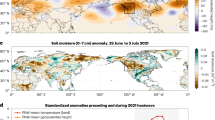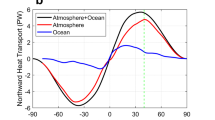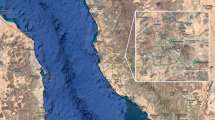Abstract
MR. MACDOWALL'S letter in NATURE of October 12 (p. 485), in which he directs attention to certain features in the sequence of annual number of hot days at Greenwich, is interesting. Nevertheless, I think he himself will acknowledge that his example, viz. the summer of 1911, is a happy one. What his diagram would lead one to expect if one were making a forecast, and not a retrospect, is that the number of hot days in 1911 would lie between his lower limit of 90 days and an upper limit of about 90+130, or 220 days; the value half-way between the two, i.e. 155 days, being the “ost probable” Clearly in this case the upper limit, and also the most probable value, may be disregarded, and the lower limit is sufficiently high to be worthy of note.
This is a preview of subscription content, access via your institution
Access options
Subscribe to this journal
Receive 51 print issues and online access
$199.00 per year
only $3.90 per issue
Buy this article
- Purchase on SpringerLink
- Instant access to full article PDF
Prices may be subject to local taxes which are calculated during checkout
Similar content being viewed by others
Rights and permissions
About this article
Cite this article
CORLESS, R. Hot Days in 1911. Nature 87, 515–516 (1911). https://doi.org/10.1038/087515b0
Issue date:
DOI: https://doi.org/10.1038/087515b0



